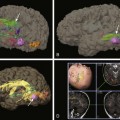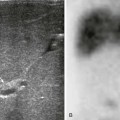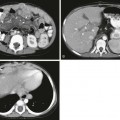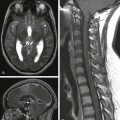Chapter 3 The MR environment is the term used to describe the area immediately surrounding and including the MR scanner.1 It is characterized by the three types of electromagnetic fields used to generate images: (1) the strong static magnetic field and associated spatial gradients (fringe field), (2) the smaller time-varying magnetic gradient fields (imaging gradients, measured in kilohertz), and (3) the radiofrequency (RF) magnetic fields (RF pulses, megahertz FM radio band). When performed under the appropriate conditions, no safety risks are inherent to MRI, and millions of MRI examinations are performed each year without incident. However, when not appropriately managed, safety concerns exist for each of the three electromagnetic fields used for MRI (Table 3-1) as well as the associated acoustic noise. Notably, most MR-related injuries and the few fatalities that have occurred primarily were a result of the failure to adhere to MR safety guidelines for the MRI environment, or they occurred because inaccurate or outdated MR safety-related information for biomedical implants and devices was used.2,3 To prevent similar adverse MR safety-related incidents from occurring, it is imperative that the potential safety risks intrinsic to the MR environment be understood and respected by users of this powerful imaging technology (Boxes 3-1 and 3-2). Table 3-1 From Bushong SC. Biologic effects of magnetic resonance imaging. In: MR safety, magnetic resonance imaging: physical and biological principles. 3rd ed. St Louis: Mosby; 2003. The majority of MR units in clinical use today operate at main or static magnetic field strengths of 0.2 to 3.0 tesla (T). For comparison, the static field of a 1.5-T scanner is approximately 30,000 times stronger than Earth’s magnetic field (roughly 0.00005 T). The most recent United States Food and Drug Administration (FDA) guidelines state that for adults, children, and infants older than 1 month, diagnostic MRI systems that operate at or below 8 T are considered to be a nonsignificant risk. For neonates, the limit is 4 T.4 In practice, 3 T is the highest field strength in common clinical use. Initially, some concern was expressed that the strong magnetic fields might have irreversible detrimental biologic/health effects in humans, including alterations in cell growth and morphology, cell reproduction and teratogenicity, DNA structure and gene expression, prenatal and postnatal reproduction and development, blood-brain barrier permeability, nerve activity, cognitive function and behavior, cardiovascular dynamics, hematologic indexes, temperature regulation, circadian rhythms, immune responsiveness, and other biologic processes.5–23 However, a comprehensive review of the literature indicates that short-term exposures (of a duration comparable to an MR examination) to high-static magnetic fields produce no appreciable detrimental biologic effects.24,25 Although no lasting adverse effects of short-term exposures to high magnetic field strengths have been reported, several relatively transient reversible biologic effects are known to occur, including electrocardiographic changes and benign sensory effects. These effects have been reported primarily at field strengths greater than 2 T and the sensory effects appear to occur most often when a person’s head is moved rapidly within the static magnetic field. The elevation in electrocardiographic T waves is believed to be due to magnetohydrodynamic phenomena. When an electrically conductive fluid, such as blood, flows within a magnetic field, an electric current is produced, as is a mechanical force opposing the flow. Hence the movement of blood in the magnetic field of the MRI causes a magnetohydrodynamic effect that produces a voltage across the vessel. Typically, the voltage is negligible except in large arteries such as the aorta (on the order of 5 mV/T) and for high blood velocities. Because the peak flow rate occurs during the repolarization phase of the cardiac cycle, the added voltage from the flowing blood manifests as an artifactual elevation of the T wave.26,27 The voltage associated with the magnetohydrodynamic effect is not considered hazardous at the magnetic field strengths that are approved for clinical use. However, at higher field strengths, the possibility exists that the induced potential might exceed 40 mV, which is the threshold for depolarization of cardiac muscle.28 Several short-term, relatively benign sensory effects have been reported at higher field strengths, including vertigo, nausea, headaches, flashing lights (also known as magnetophosphenes), a metallic taste, and/or sensation in dental fillings.29 The magnetophosphenes are believed to be a result of torque upon the rods or cones in the retina imposed by the magnetodynamic resistive forces during quick movements of the head and/or eyes within the magnetic field. Similarly, the vertigo, nausea, and/or headache have been posited to be associated with torque on the hair cells in the semicircular canals (causing disequilibrium). Electrical currents induced in saliva or metallic fillings are believed to account for the incidences of a metallic taste and/or sensations that have been reported. 5 Gauss Line: Although exposure to high magnetic fields may not inherently be unsafe, failure to adhere to safe practices within the MR environment have led to most of the MR-related accidents and fatalities that have occurred. These incidents have involved the inappropriate and/or inadvertent introduction of metallic objects and or implanted medical devices into the scan room. The term fringe field typically is used to refer to the full spatial extent of the magnetic field gradient associated with an MR magnet. Five gauss (G) (0.0005 T) and below are considered “safe” levels of static magnetic field exposure for the general public.1 The 5 G line identifies the perimeter around an MR scanner within which the static magnetic fields are higher than 5 G; it is the most commonly recognized MR safety policy.26 Safety considerations require that this distance from the magnet be determined and that potentially unsafe areas be identified with appropriate and conspicuous signage. Importantly, the 5G line extends in three dimensions; thus when the MR area is sited, the extent of the fringe field to the floors above and below the magnet must be considered. Notably, the term MR environment also is often used synonymously to refer to the area within the 5 G line. Because of the potential hazards, access to this area must be rigorously controlled and supervised. Magnetic Field Interactions: Torque and Attractive Forces: The field associated with an MR scanner can be separated into two spatial regions defined by the types of interaction with ferromagnetic objects that predominate in each region. The first region surrounds the magnet isocenter and is contained within the bore of the MRI scanner. The magnetic field in this region essentially is temporally constant and homogeneous in strength. A magnetic object introduced into this region of the static field is subjected to a torque that acts to align it with the magnetic field, just as magnetic material aligns itself with the poles of a permanent bar magnet or a compass needle aligns itself with the earth’s magnetic field.1 Hence any nonspherical metallic object that enters the spatially homogenous static region of the field will be subjected to a rotational force or torque such that its long axis will be aligned with that of the main magnetic field. If metallic implants are not sufficiently anchored by the surrounding tissue (e.g., bone in the case of an orthopedic implant), this rotational motion of metallic implants will cause trauma to the surrounding tissue. The magnitude of these effects depends on the geometry and mass of the object, as well as the characteristics of the MR system’s magnetic field. In the second region (the fringe field), the strong magnetic field strength drops off rapidly as the distance from the magnet increases, producing a large spatial gradient that typically is greatest in regions immediately adjacent to the magnet. Metallic objects introduced into this magnetic field gradient experience a translational (attractive) and rotational force. The translation will be in the direction of the higher field strength. The strength of the attractive/translational force will depend on the size of the object and its location within the gradient field and will increase rapidly as the object approaches the magnet. As such, the metallic object will be accelerated along the direction of the spatial gradients in the static field and quickly can become a dangerous projectile. Depending on the size and composition of the metallic object, these attractive/translational effects may begin as soon as the object is introduced into the scan room. Once the object enters the uniform field within the bore of the magnet, acceleration will cease and the object will come to a stop.26 The potential hazards associated with the spatial gradients are greatest for high magnetic field strengths and large fringe fields. In general, the forces increase approximately as the square of the field strength but will vary depending on the composition of the object.30 For example, at 3 T compared with 1.5 T, the force on a paramagnetic material (e.g., a stainless steel scalpel) is five times greater, whereas the force on a ferromagnetic object (e.g., a steel wrench) is 2.5 times greater.30 Finally, but importantly, even for a given field strength, the magnitude and footprint of the spatial gradients can vary between magnet configurations. For example, it has been reported that short-bore MR systems have significantly higher spatial gradients than do long-bore scanners, particularly those operating at 3 T.31,32 This finding highlights the multiple nuances and factors that must be considered when evaluating and establishing MR safety guidelines and operating procedures for any object before it may be introduced into a specific MRI environment. The potential risks associated with the introduction of metallic objects into regions of high and or rapidly spatially varying magnetic field strengths cannot be underestimated. It is a common misconception that the magnet is only “on” when the images are being acquired. However, the magnet is always on, and signage to indicate the “Magnet is ON” should be displayed conspicuously on the door to the MR scan room. Missile/Projectile Effect: The projectile/missile effect, wherein a ferromagnetic object is accelerated toward the isocenter of the magnet, is the most widely recognized and publicized safety hazard associated with MRI. Objects constructed partially or entirely of ferromagnetic materials (e.g., iron, nickel, cobalt, and the rare earth metals chromium, gadolinium, and dysprosium) are strongly attracted to the magnet bore. Steel objects also are highly ferromagnetic, as are some medical grades of stainless steel. Notably, working a metal by machining, molding, and/or bending it, for example, can alter its magnetic properties and, as a result, some forms of nonmagnetic stainless steel can be made magnetic. For this reason, the MR safety of a given metallic object must be evaluated in its final form.33 Although metals such as aluminum, tin, titanium, gold, and lead are not ferromagnetic, objects are rarely made of a single metal (e.g., the ferromagnetic screws used to secure the wheels to the frame of an aluminum cart).33 Consequently, carefully inspecting all objects before introducing them into the MR environment is necessary. If any doubt remains regarding the presence of ferromagnetic material, the object should be checked with a permanent magnet and/or a ferromagnetic wand as a final precautionary measure before it enters the scan room. As noted previously, within the MR environment, a ferromagnetic object will experience a magnetic pull that increases greatly as it approaches the magnet bore. Depending on the size of the object, the magnetic field strength, and the proximity of the object to the magnet, the attractive force may be so great that it becomes impossible for an individual to continue to hold onto the object. Any individual—whether a patient or a staff member—who is in the path between the object and the center of the magnet (e.g., the patient lying in the magnet bore) can be seriously injured or killed.34 Numerous instances of MR-related accidents involving objects such as scalpels, scissors, oxygen tanks, intravenous line poles, wheelchairs, transport carts, floor buffers, mop buckets, vacuum cleaners, other medical devices, and even firearms have been documented. Any injuries related to ferromagnetic projectiles must be documented; the necessary forms can be accessed on the FDA website.35,36 More comprehensive information regarding these online resources is provided in a later section of this chapter. During imaging acquisition, gradient magnetic fields are transiently imposed along the main magnetic field to spatially localize and encode the spins. These gradient magnetic fields are much weaker than the static magnetic field and are generated by gradient coils located inside the magnet bore. Each orthogonal axis (i.e., x, y, and z) has a pair of gradient coils. For a given direction, a linear gradient magnetic field is generated within the main magnetic field by applying electrical current in opposite directions to the coil pair over a short time interval.28 When this gradient magnetic field is applied, the magnetic field intensity changes rapidly, giving rise to a time-varying magnetic field. The rate of change in magnetic field (dB) occurs over time (dt) and usually is measured and reported in units of dB/dt expressed in milliteslas per meter per millisecond (mT/m/msec) or in gauss per centimeter per second (G/cm/sec). During the rise time of the magnetic field, an electrical current can be induced in any electrical conductor (e.g., implanted medical device, wire, human body). Notably, the magnitude of the time-varying magnetic field along each of the three spatial directions (i.e., x, y, and z) is zero at the center of the magnet and increases linearly with increasing distance from the isocenter. Because the human body is a conductor, the rapidly switching magnetic fields can induce electrical fields and current in a patient (as described by Faraday’s law of induction) that may lead to the stimulation of muscle and nerve tissues.28 The mean threshold levels (measured in tesla per second) for various stimulations are 3600 T/sec for the heart, 900 T/sec for the respiratory system, 90 T/sec for pain, and 60 T/sec for the peripheral nerves. However, the exact values differ significantly among individuals.26 Experience has shown that sufficient dB/dt levels can produce brief muscle twitches and peripheral nerve stimulation (PNS) that is perceptible as a “tingling” or “tapping” sensation. This sensation can become uncomfortable and/or painful as the gradient magnetic field increases to 50% to 100% above perception thresholds.37 For these reasons, threshold sensations, when reported, should not be ignored, because they may readily escalate to uncomfortable levels. Although cardiac stimulation is a concern, studies conducted in dogs have shown that the cardiac stimulation threshold for the most sensitive 1% of the population is 20 times, and the mean defibrillation threshold is 500 times, the energy required for PNS.33 The exceedingly strong and/or rapidly switching gradient magnetic fields necessary to achieve cardiac stimulation threshold levels are more than an order of magnitude greater than those used in commercially available MR systems.37–39 In addition to varying from person to person, stimulation thresholds also depend on gradient direction. Assuming equal dB/dt for each of the three gradient axes, the associated gradient-induced electric fields are highest for the largest perpendicular body cross section. Accordingly, the y gradient has the lowest dB/dt PNS threshold since the x-z cross section of the human body is usually larger than the other cross sections.40,41,41a In addition, the mean PNS threshold for the y gradient was further reduced (by approximately 32%) when the patient’s hands were clasped; the x and z gradient PNS thresholds were not similarly affected.40,41,41a In practice, the potential for PNS is greatest for fast imaging (e.g., echo planar imaging [EPI]) acquisitions, particularly when oblique imaging planes are obtained where the combined contributions of gradients from more than one axis result in a higher effective slew and/or when the readout (i.e., frequency encode) lies along the craniocaudal direction.26 When the threshold for PNS is exceeded, the anatomic site of the stimulation depends on the direction along which the magnetic field gradient is applied. Anatomic sites stimulated by the activation of the x gradients include the bridge of the nose, left side of the thorax, iliac crest, left thigh, buttocks, and lower back. Stimulation sites associated with the application of the y gradient include the scapula, upper arms, shoulder, right side of the thorax, iliac crest, hip, hands, and upper back. For the z gradient, stimulation sites are the scapula, thorax, xiphoid, abdomen, iliac crest, and upper and lower back.37 In addition, it has been noted that the PNS sites typically correspond to bony prominences. Because bone is less conductive than the surrounding tissue, it is believed that current densities are increased in narrow regions of tissue between bone and skin, resulting in lower than expected nerve stimulation thresholds.37 Normal imaging sequences (e.g., conventional spin echo and gradient echo) induce currents of a few tens of milliamperes per square meter, a level that is far below that present in the normal brain and heart tissue. However, as noted previously, PNS is quite possible for the rapid imaging techniques such as EPI and for high-performance gradients. These effects can be controlled by limiting the maximum rate of change in the magnetic field gradients. Early limits imposed by the FDA to prevent PNS were 1 dB/dt at 20 T/sec for pulse durations greater than 120 microseconds.33 However, the increasingly apparent diagnostic benefits and widespread use of EPI, single-shot fast-spin echo, and other fast imaging techniques for routine clinical MR imaging caused the FDA to reevaluate and revise these limits. It is now recognized that although these rapid imaging techniques have the potential to cause PNS, the sensation in itself is not harmful. However, painful stimulation still should be avoided. Thus the current FDA standard is based on the threshold for sensation, rather than a specific numerical value of dB/dt. Specifically, “current FDA guidance limits the time rate of change of magnetic field (dB/dt) to levels which do not result in painful peripheral nerve stimulation.” This policy reflects in part the complexity of modeling and calculating the current distribution in the body associated with the pulsed gradient fields. Correspondingly, dB/dt levels below that resulting in painful stimulation are considered a nonsignificant risk by the FDA. It is important to note that dB/dt is a function of the gradient strength and rise time and not of the static field strength. Thus dB/dt is of equal concern for both lower and higher field scanners. Clinically, two operating modes for the RF and gradient field levels used for imaging are permissible, normal and first level controlled (Table 3-2). In normal mode, the system output levels are below those that will cause physiologic stress and therefore are appropriate for all subjects. Alternatively, in first level conditional mode, one of the MR system outputs (e.g., dB/dt) may reach a value that may cause physiological stress and thus may not be appropriate for the most medically compromised patients. Operation in this mode requires authorization by appropriate clinical staff and vigilant medical supervision during the examination. Institutional Review Board approval is required for operation above these levels (second level controlled). In practice, the commercial MR systems monitor dB/dt throughout the examination and generate a warning for the specific protocols for which PNS is likely. The PNS limits are derived from the empirical results obtained from clinical trials. For normal operating mode, the dB/dt threshold level is set at 80% of the mean threshold value for PNS stimulation, and it is set at 100% for the first level.30 In addition, the MR operator should remain in constant verbal contact with the patient and instruct him or her to report any tingling, muscle twitching, or painful sensations that occur during scanning. This contact is not possible for infants and for sedated, noncommunicative, or otherwise compromised patients. Operationally, dB/dt can be reduced by increasing the field of view and/or slice thickness, reducing the matrix size, and decreasing receiver bandwidth. In addition, because the y gradient has the lowest stimulation threshold, whenever possible, the most rapidly changing gradient waveform (e.g., read out; i.e., frequency encode in EPI) should be placed along a direction other than y. Table 3-2 From Center for Devices and Radiological Health, Food and Drug Administration. FDA guidelines for magnetic resonance equipment safety (website): http://www.aapm.org/meetings/02AM/pdf/8356-48054.pdf. Accessed July 25, 2012. One of the primary safety concerns in MRI is tissue heating. The conductivity of tissue allows the absorption of RF energy, which is transformed into heat as a result of resistive losses.42,43 The heating is greatest at the periphery of the body, and thus the skin is the most prone to this effect.30 When thermally challenged, the body responds by thermoregulatory mechanisms and attempts to dissipate the heat by means of convection, conduction, radiation, and evaporation. If these attempts are not completely successful, the heat accumulates and is stored, resulting in a rise in local tissue and/or systemic core temperatures,42–44 which has the potential to produce physiological changes.28 For humans, the typical skin temperatures are about 33° C, whereas core temperatures are about 37° C. Experience has shown that when the body is subjected to significant RF power levels, it immediately attempts to dissipate the heat load through vasodilatation of the blood vessels of the skin, with the skin approaching core temperature. This response mechanism allows the body to reduce heat fairly rapidly and typically is evidenced by flushing of the skin, which in itself is not harmful and usually subsides within several hours. The dose measure used to describe this energy absorption or heat dose is the specific absorption rate (SAR). SAR is defined in the International Electrotechnical Commission standard as the amount of RF power (measured in watts) absorbed per patient mass in kilograms (W/kg). The MR system software calculates an SAR for each acquisition and enforces the limits established by the FDA. Because SAR depends on patient weight, it is important that an accurate value be entered during the patient registration procedure. The amount of RF energy that is absorbed is dependent on the frequency (as determined by the static magnetic field strength), the RF coil used, the volume (size), composition (conductivity), and configuration of the exposed tissue and the duty cycle and type of RF pulses applied, as well as other factors.42–46 Notably, SAR increases with the square of the frequency (and hence magnetic field strength) and patient size.30 Consequently, for a given pulse sequence, doubling the field strength (e.g., 1.5 vs. 3 T) results in a factor of four increase in SAR. SAR can be minimized by decreasing the power and/or duty cycle of the RF pulses. In practice, this minimization can be accomplished by increasing the repetition time, reducing the number of slices, and, when feasible, reducing the RF flip angle (because SAR is proportional to the square of the flip angle). In addition, for fast-spin echo and EPI acquisitions, SAR also can be reduced by increasing the interecho spacing and/or reducing the echo train length (for a fixed repetition time). A person’s ability to respond to the thermal challenge and effectively dissipate the heat is influenced by the rate at which the energy is deposited and the duration of the exposure. Underlying health conditions such as cardiovascular disease, hypertension, diabetes, fever, old age, obesity, or a compromised ability to perspire can impair a person’s ability to tolerate the thermal challenge.47–51
Magnetic Resonance Safety
Magnetic Resonance–Related Electromagnetic Field
Mechanism of Interaction
Potential Effects
Static magnetic field (T)
Polarization/magnetization
Elevated electrocardiographic T wave and/or transient sensory effects (e.g., vertigo, nausea, phosphenes, and metallic taste)
Transient gradient magnetic field (dB/dt)
Induced currents
Acoustic noise
Peripheral nerve stimulation
Physiologic stress, anxiety, temporary hearing loss
Radio frequency field (specific absorption rate)
Thermal heating
Local burns
Safety Considerations of the Magnetic Resonance Environment
Biologic Effects of Static Magnetic Fields
Interaction of the Main Magnetic Field with Ferromagnetic Objects
Time-Varying Gradient Magnetic Fields
Operating Mode
Conditions/Qualifications
Normal mode
Will not cause stress; suitable for all patients
First level controlled mode
May cause stress; requires medical supervision and positive action by operator to enter
Second level controlled mode
Institutional Review Board approval required
Radiofrequency Fields
![]()
Stay updated, free articles. Join our Telegram channel

Full access? Get Clinical Tree


Magnetic Resonance Safety





